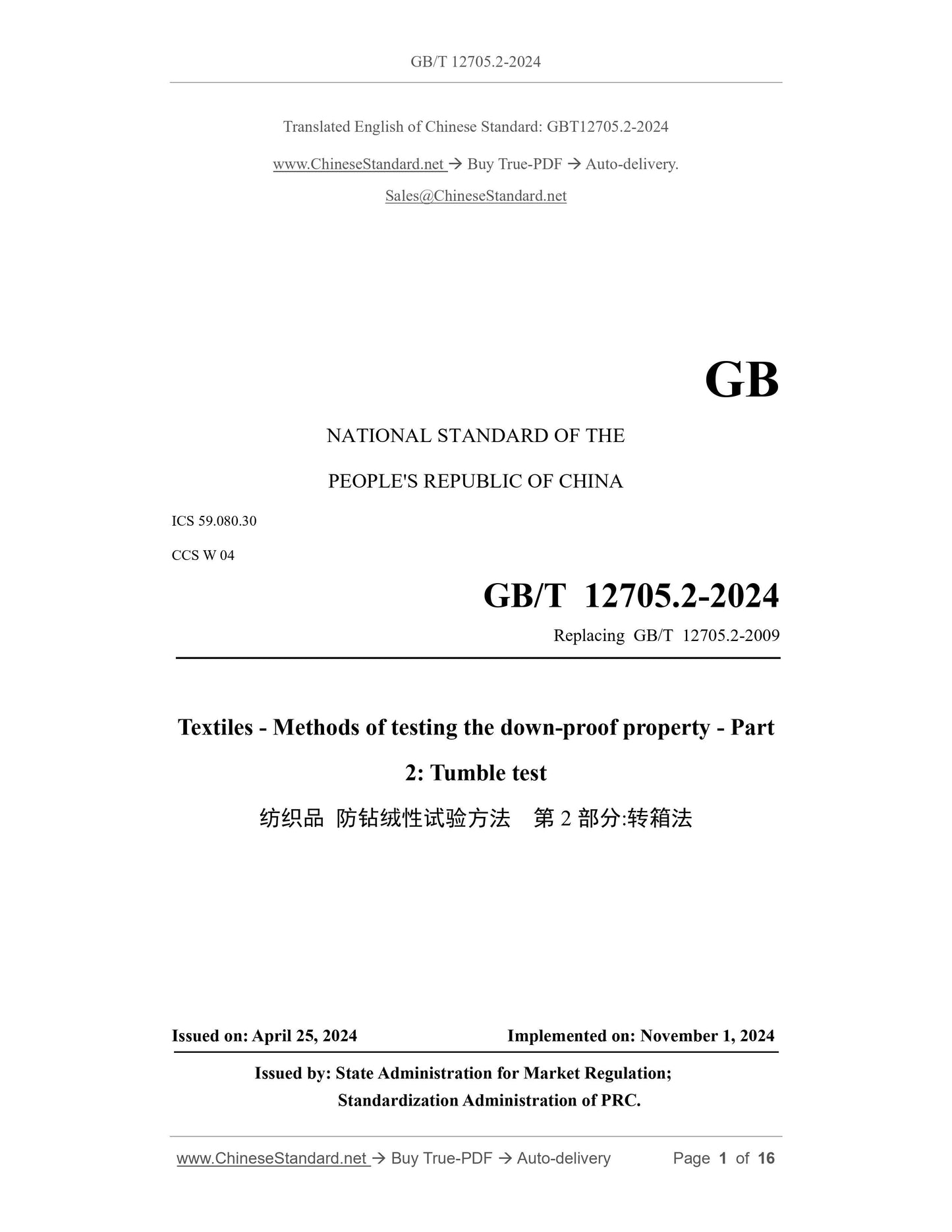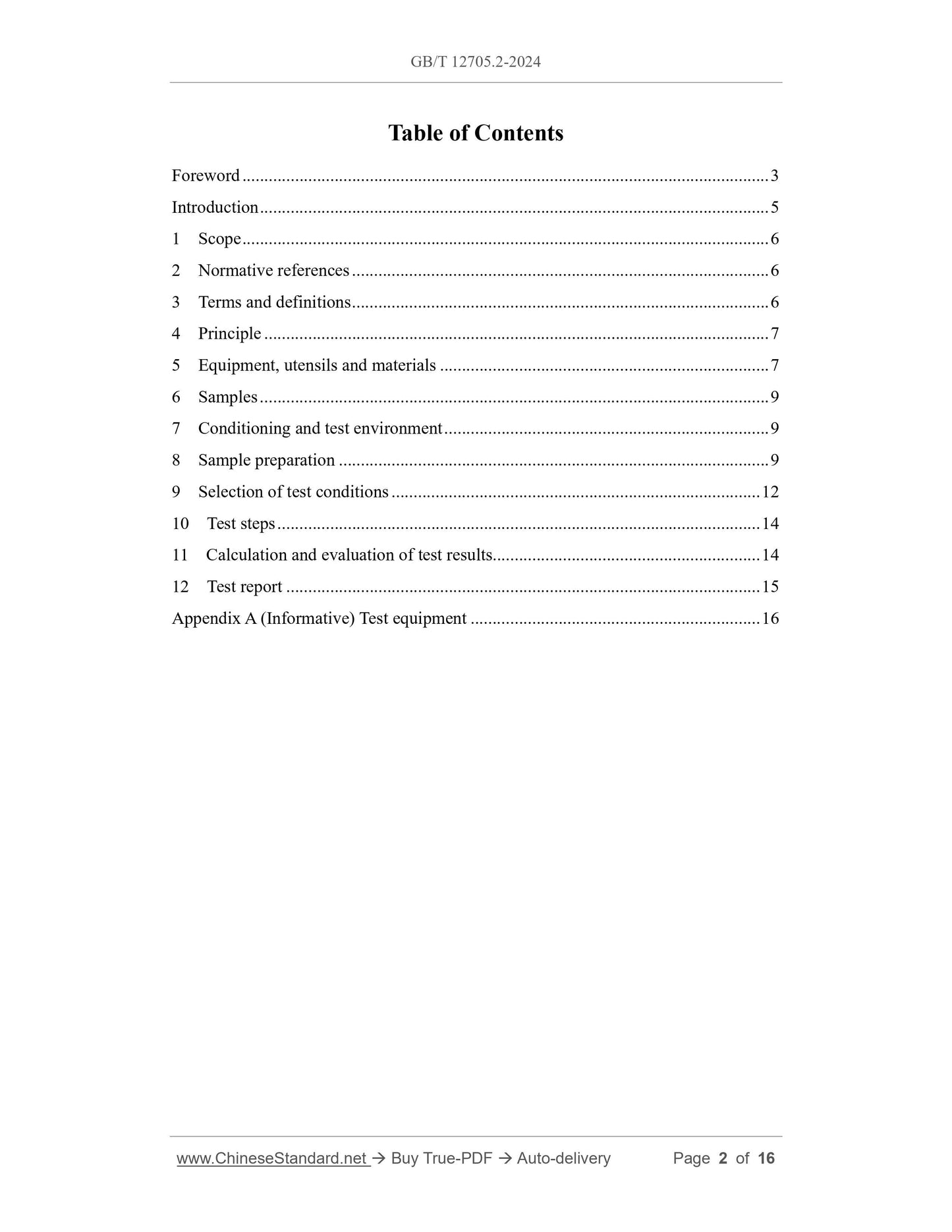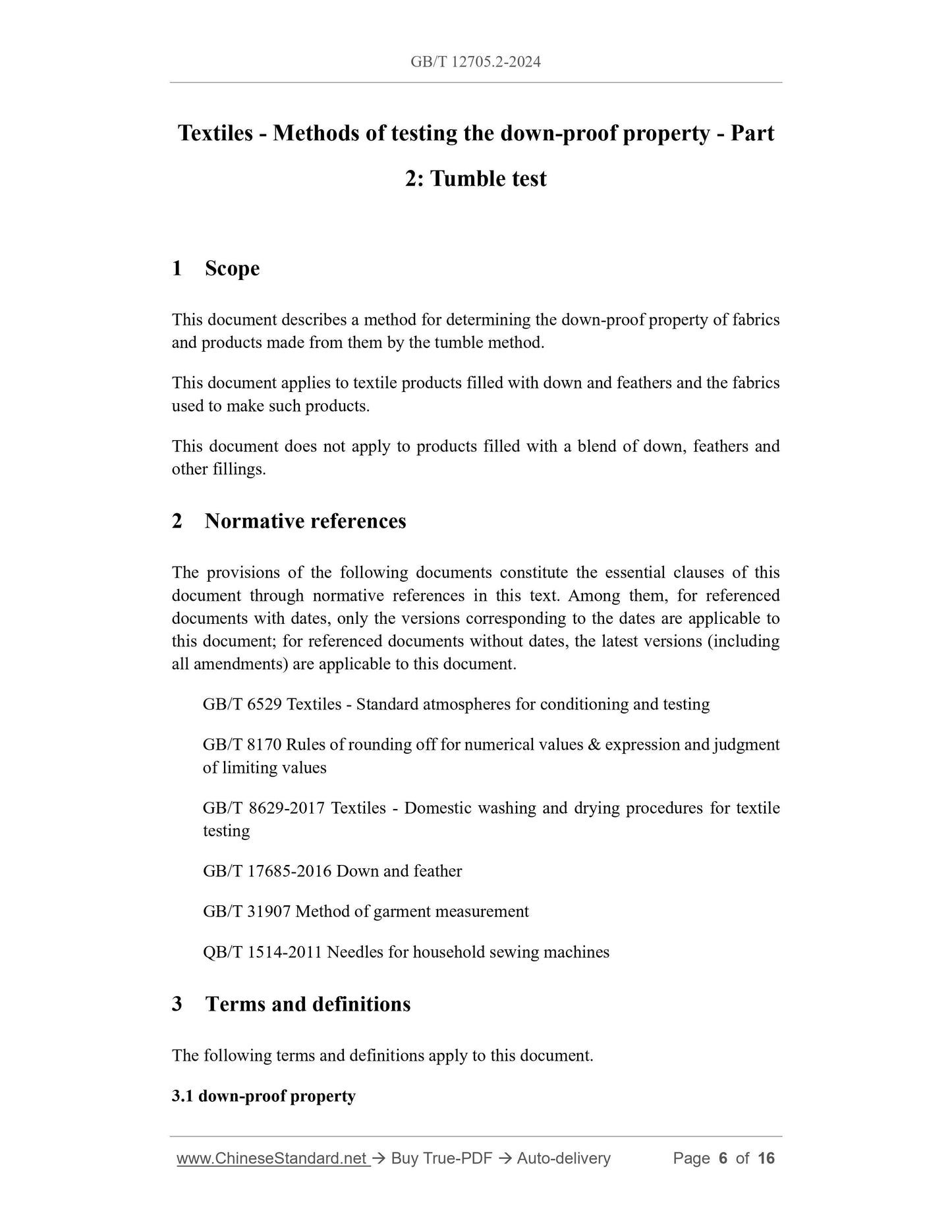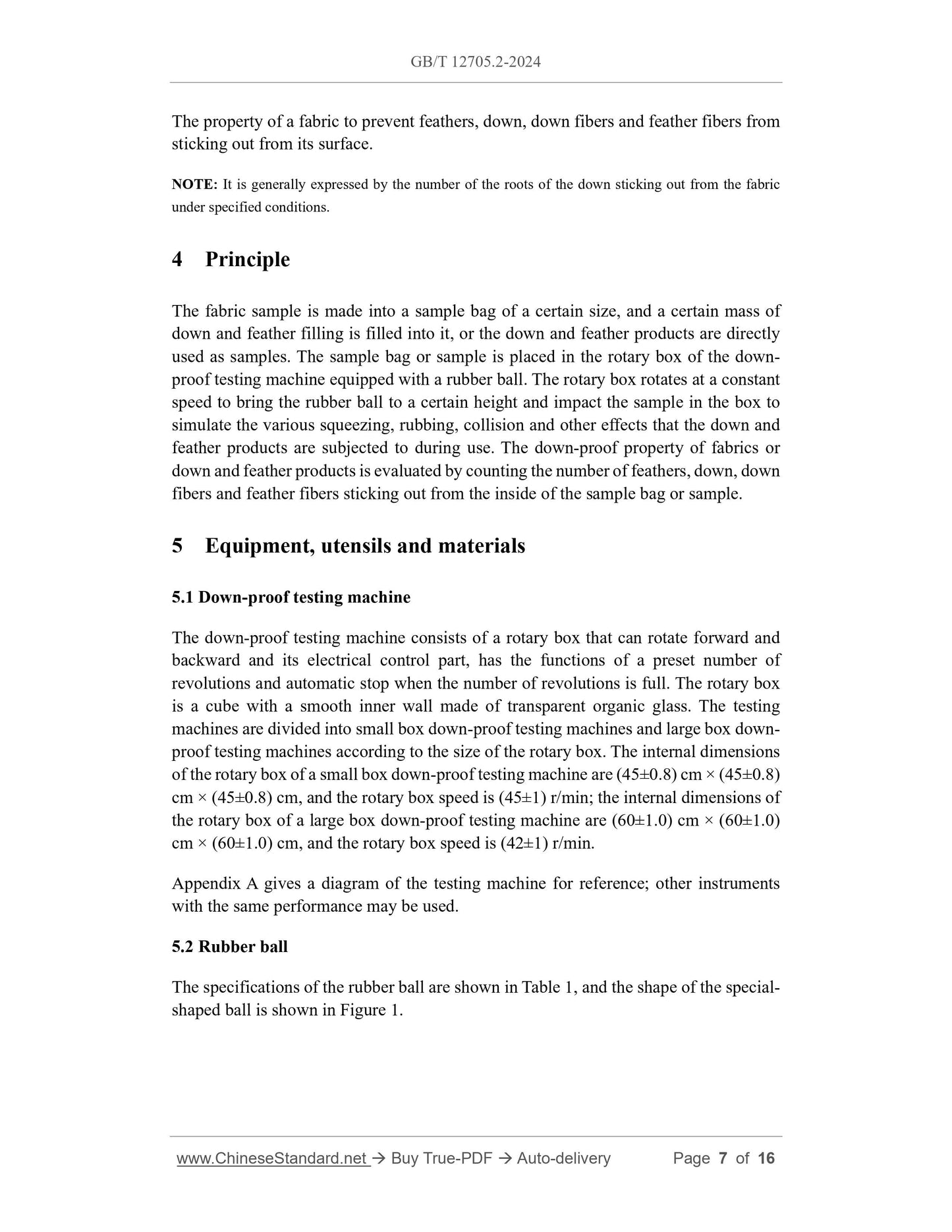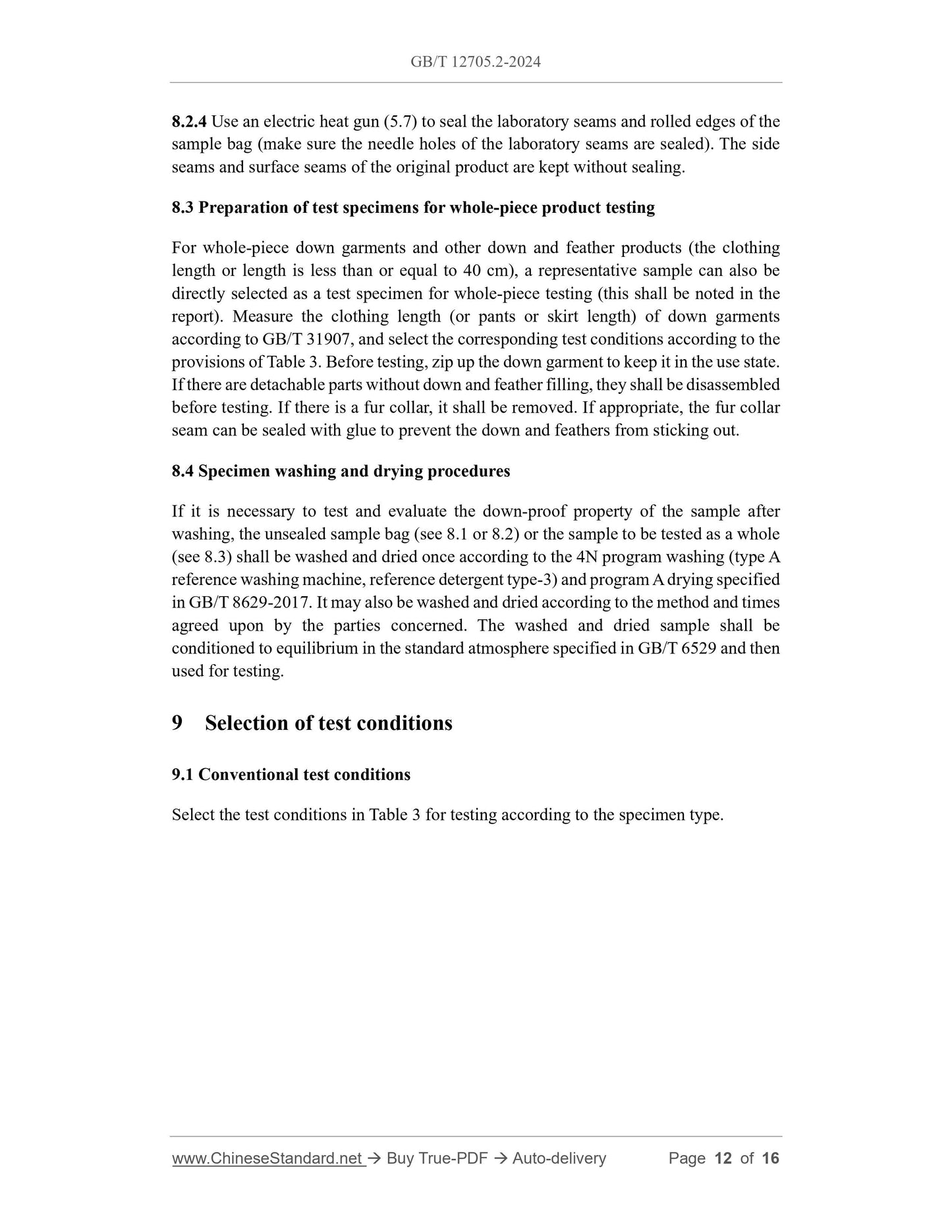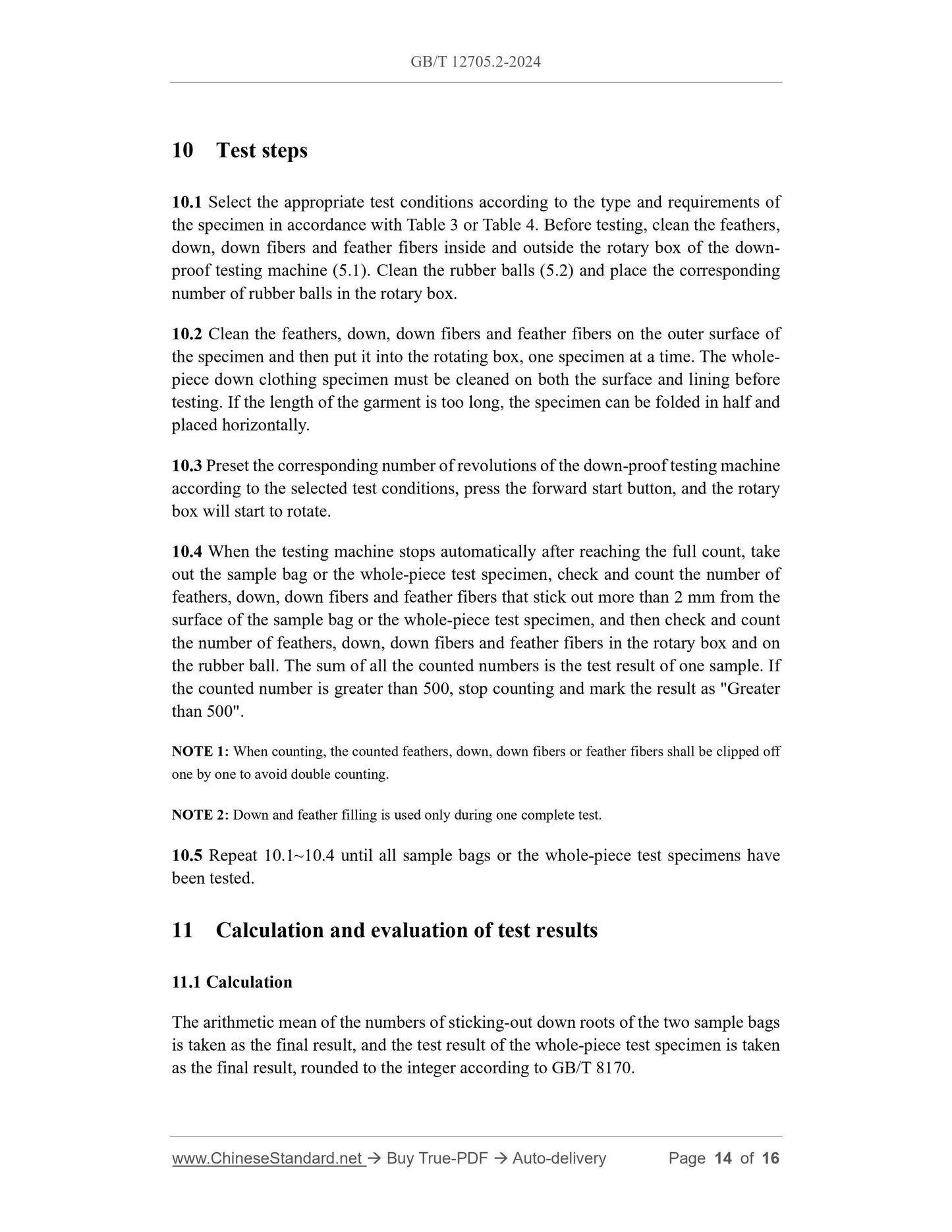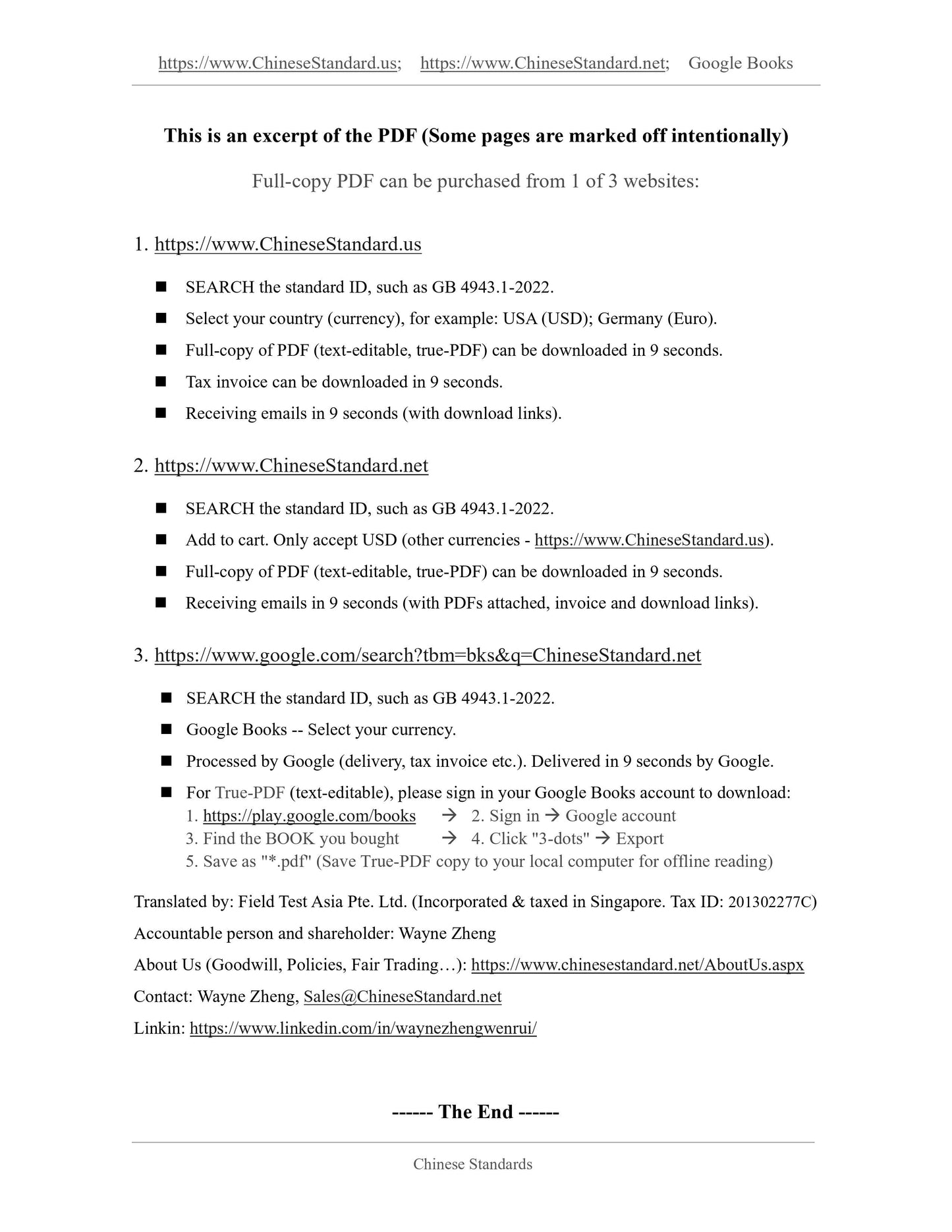1
/
of
7
www.ChineseStandard.us -- Field Test Asia Pte. Ltd.
GB/T 12705.2-2024 English PDF (GB/T12705.2-2024)
GB/T 12705.2-2024 English PDF (GB/T12705.2-2024)
Regular price
$275.00
Regular price
Sale price
$275.00
Unit price
/
per
Shipping calculated at checkout.
Couldn't load pickup availability
GB/T 12705.2-2024: Textiles - Methods of testing the down-proof property - Part 2: Tumble test
Delivery: 9 seconds. Download (and Email) true-PDF + Invoice.Get Quotation: Click GB/T 12705.2-2024 (Self-service in 1-minute)
Newer / historical versions: GB/T 12705.2-2024
Preview True-PDF
Scope
This document describes a method for determining the down-proof property of fabricsand products made from them by the tumble method.
This document applies to textile products filled with down and feathers and the fabrics
used to make such products.
This document does not apply to products filled with a blend of down, feathers and
other fillings.
Basic Data
| Standard ID | GB/T 12705.2-2024 (GB/T12705.2-2024) |
| Description (Translated English) | Textiles - Methods of testing the down-proof property - Part 2: Tumble test |
| Sector / Industry | National Standard (Recommended) |
| Classification of Chinese Standard | W04 |
| Classification of International Standard | 59.080.30 |
| Word Count Estimation | 14,132 |
| Date of Issue | 2024-04-25 |
| Date of Implementation | 2024-11-01 |
| Older Standard (superseded by this standard) | GB/T 12705.2-2009 |
| Issuing agency(ies) | State Administration for Market Regulation, China National Standardization Administration |
Share
